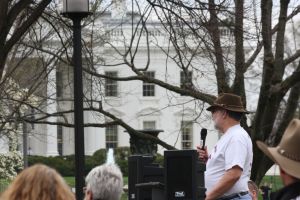article by John Holland from the pages of the North Platte Telegraph
The Great “Horse Sense” Debate is On
LB 306 would make it a crime for a horse rescue to refuse to accept any horse offered to it. These bills are part of a proxy war between corporate agriculture, breeders and what they see as the “animal rights” movement. LB 306 penalizes those working to compensate for over-breeding and is more a vendetta than reasoned legislation.
Larson claims that opening a horse slaughter plant would be good for Nebraska’s economy, but Nebraska already enjoys the second lowest unemployment in the country (4.4 percent). In fact, history tells us that it would bring only misery and loss to Nebraskans.
I will present evidence proving that horse slaughter is bad for the economy, the community, the taxpayers, horse owners and the horses themselves. American horse slaughter is a dying practice, and spending treasure to resuscitate it is folly.
Ignoring the worst economy in living memory, both [Charles] Stenholm and Larson claim that the closing of the slaughter plants has harmed the horse market and increased equine neglect. I will first prove this is impossible.
A brief history of horse slaughter:
In 1990, there were about 12 horse slaughter plants operating in the U.S. One of these was Central Nebraska Packing in North Platte. Along with plants in Canada and Mexico USDA statistics show they slaughtered a total of 419,133 American horses that year. Both the number of slaughterhouses and horses slaughtered declined steadily through the decade despite no legal restrictions until California banned slaughter in 1998. Nobody claimed that this 77.5 percent reduction caused any problems.
By 2000 there were only three, foreign owned, horse slaughter plants left in the U.S.; two in Texas and one in Illinois. Horse slaughter declined until 2002, and then rebounded slightly to a level just over 100,000 horses a year.
In January 2007 the two Texas plants were closed when the courts ruled that a 1949 law against selling horsemeat for human consumption was still in effect. The Dallas Crown plant in Kaufman Texas had earlier been ordered closed by the town Board of Adjustments because of pollution, but had successfully remained open through legal delaying.
The remaining Cavel plant in DeKalb, Ill., was shut down in September 2007 after unsuccessfully challenging a new state law against slaughtering horses for human consumption. The removal of funding for required inspections had also closed the plant temporarily and the work-around program allowing the plants to pay for their own inspections was eventually ruled to be illegal. Like Dallas Crown, the plant was also facing massive fines for its sewage discharge.
The key to the issue is what happened after the plants closed; virtually nothing. The plants relocated their plants to Canada and Mexico in weeks.
In the 10 years before the closings an average of 117,121 American equines were slaughtered per year, and in the three years afterward the annual average was virtually the same at 116,867.
Just as many horses are being purchased at approximately the same prices from the same auctions as before the closings. Therefore, any claim that the closures harmed the horse market or caused horses to be neglected is inescapably false.
We have had slaughter available and it failed to protect the horse market from the recession.










No comments:
Post a Comment